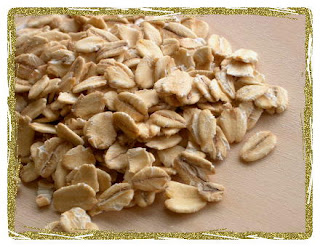For anyone that has struggled or is
struggling with a dietary lifestyle change, such as going gluten-free it’s not
always an easy task. Gluten is hidden in a variety of things; anywhere from
condiments to meat-glue to alcohol. As the changes begin to sink in, and
avoiding the said ingredients becomes second nature a new detour comes into
sight; cross contamination (insert scary music here).
So what exactly is cross
contamination and why did the scary music start?
Cross contamination can be found in
a variety of non-gluten grains; the most common being oats. But, as I already
mentioned oats are a gluten-free grain, so what is the deal?
There are several
different ways cross contamination can affect gluten-free gains. Cross
contamination can occur any time during the planting of the oat seed to the
packaging of the grain for sale, and anywhere in between. First of all
oats are a seasonal crop, so many farmers will alternate growing oats with
other grain crops such as wheat or barley. Leaving behind contaminates when the
oats are planted. Secondly, if neighboring farms are growing wheat, the
wind can carry the wheat spores over to the oats, contaminating them. Then you
need to know where the oats are processed. Are the machines that pick the oats
and process the oats shared with any other type of grains? Then, even if they
are processed in a gluten-free facility how are they being transported once
they are harvested?
I remember hearing a speaker at a
seminar mention that a lab called Cyrex labs had done a study to see how much of
the oats on the market were contaminated with gluten. The surprise that they
found was that oats that were labeled as “gluten-free,” were at times more
contaminated with gluten than were just regular Quaker oats!
An incident at Whole Foods market
brought this to consumers' attention when several children with gluten allergies
were sent to the hospital after consuming products sold exclusively at Whole
Foods that claimed to be “gluten-free.”
Another study published in the New England
Journal of Medicine, took 12 containers of oats; 4 different batch numbers from
3 different brands (Quaker, Country Choice, and McCanns). Scientists tested all
12 containers for gluten contamination and found that:
- 3 of the 12 containers contained gluten levels of less than 20 ppm
- 9 of the 12 had levels that ranged from 23 to 1,807 ppm
- All brands that were tested had at least 1 container of oats that tested above 200 ppm gluten
Although the FDA has not set criteria
for what a “gluten-free” claim can be, they have proposed that any product that
claims “gluten-free” must be tested to have less than 20 ppm of gluten
detected. As of now there is no set regulation that requires products to guarantee
that their claims of “gluten-free” are accurate. Sadly, as consumers we must
merely trust that the food manufactures are complying with the voluntary
guidelines that have been set, without truly knowing if the claims that they
have made are 100% accurate or what degree of testing they have undergone.
My advice to you if you know that
you have a gluten allergy or intolerance, is to avoid manufactured products
that claim to be gluten-free until an enforced standard is in place. You can
also look for the Gluten Free Certification logo on packaging, which proves that
the product has gone through testing to certify the gluten-free claim. The
Gluten Intolerance Group of North America® (GIG) is a non-profit
support organization that was founded by the Gluten-Free Certification
Organization (GFCO). “Products that earn Gluten-Free Certification by the GFCO
contain less than 10 ppm; half the gluten levels that the FDA has proposed as
levels allowable in foods labeled gluten-free.”
Then there are guidelines that go
above and beyond that of the FDA and GFCO. The Celiac Sprue Association has
determined their own guidelines for what they consider to be gluten-free. In
order to help those with celiac disease choose uncontaminated food products,
they have determined the following criteria:
- Gluten-free products can not contain any form of gluten grain; this includes all species of wheat, barley, rye, and oats (WBRO). (Oats are not a risk-free choice for all celiacs. In vivo and in vitro studies indicate that some celiacs have an immune response even to pure, uncontaminated oats. Presently there are no indicators available to predict which celiacs may have such a response.) CSA
- Source ingredients and additives can not be from WBRO grains
- Ingredients that have been “specially processed” to remove gluten are not allowed.
- All products must be tested to contain less than 5 ppm of gluten
- ELISA testing to determine the level of cross contamination
To
view a comparison against the different gluten-free definitions, click here.
It’s not only oats that you need to
be aware of, other non-gluten grains have been shown to be contaminated as
well. Rice and Corn are ones that I would suggest to also be wary of.
For a list of products that have
been guaranteed gluten-free according to the Celiac Sprue Association
standards, click here.
Pura Vida!
Alica Ryan, NTP




Alica, this is a great article that will be helpful to many who think they are eating gluten free, but really are not. Thanks for this investigative view on oats.
ReplyDelete